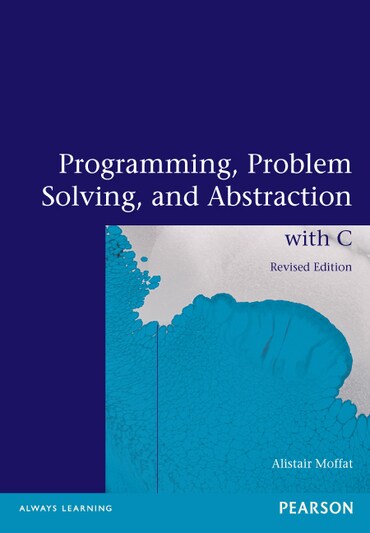Switch content of the page by the Role togglethe content would be changed according to the role

Programming, Problem Solving and Abstraction with C, Pearson Original Edition, 2nd edition
Published by Pearson (December 19, 2012) © 2013
- Alistair Moffat University of Melbourne
$107.36 AUD
This product is expected to ship within 5-7 business days for Australian customers.
Title overview
This Pearson Original edition is specifically published for Melbourne University.
